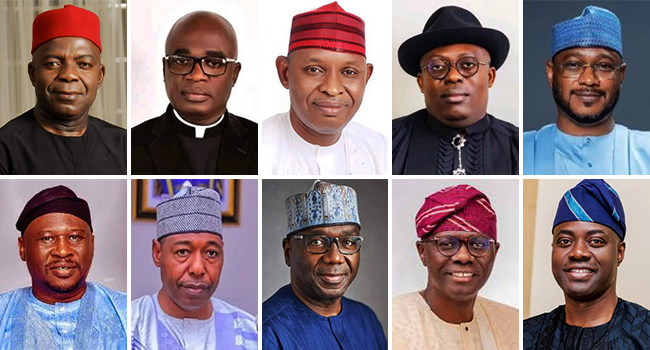By Peter Omopo
Saturday, July 12, 2025 – At least 12 Nigerian states, including Lagos, Benue, and Kaduna, failed to meet their first quarter (Q1) revenue targets for 2025 despite collectively spending over N117 billion on debt servicing within the same period, a Saturday PUNCH investigation has revealed.
This disclosure is based on an analysis of Q1 2025 Budget Implementation Reports sourced from state government websites and Open Nigerian States, a transparency platform backed by BudgIT for public finance data.
The affected states are Abia, Adamawa, Bayelsa, Benue, Borno, Ekiti, Kaduna, Katsina, Kebbi, Lagos, Ondo, and Taraba. Reports for the remaining 23 states and the Federal Capital Territory were unavailable as of press time.
Lagos Tops Debt Spending, Misses Revenue Mark
Lagos State led the pack in debt servicing, disbursing N26.8 billion on both domestic and foreign debt obligations during Q1—28.2% of the N95 billion it budgeted for the year. However, the state recorded N583 billion in revenue, falling short of its N728.9 billion Q1 target. This represents only 20% of its N2.915 trillion annual revenue projection.
The Lagos State Government attributed the revenue shortfall to delays in donor-funded interventions and complex procurement processes, which stalled the release of anticipated grants and aids.
Benue Struggles With Revenue Software, Spends N21bn on Debt
Benue State followed closely, spending N21 billion on debt servicing, even as it generated only N67.05 billion in total revenue for the quarter—just 12.2% of its N550.11 billion annual budget.
Internally Generated Revenue (IGR) stood at N5.18 billion, 14.6% of its Q1 target, while FAAC allocations amounted to N58.71 billion (13.6%). The state blamed its IGR shortfall on challenges linked to a newly deployed revenue collection software.
Kaduna Allocates N18bn to Debt Servicing, Falls Short on IGR
Kaduna State ranked third, allocating N18 billion to debt charges—N2 billion more than it spent in Q1 2024. Its total Q1 revenue (excluding the N137.28 billion opening balance) was N69.66 billion, well below projections.
The state’s FAAC receipts came in at N50.39 billion, while IGR stood at N19.27 billion, representing 14.8% and 17.2% respectively of the state’s annual targets. Both revenue streams failed to meet the quarterly benchmark of 25%.
Bayelsa, Adamawa Also Post Shortfalls
Bayelsa State spent N13.5 billion servicing debt in Q1 2025, up from N8.1 billion during the same period in 2024. The state received N120.55 billion in FAAC disbursements, 21.4% of its quarterly projection of N140.94 billion.
While the state exceeded its IGR target by generating N12.55 billion against a N9.75 billion projection, the FAAC shortfall significantly affected its overall financial performance.
In Adamawa State, N8.4 billion was expended on debt servicing in Q1 2025, slightly up from N7 billion in Q1 2024. Like others, the state fell short of its revenue targets.
Outlook
The fiscal data from these 12 states paints a worrying picture of mounting debt servicing costs amid declining revenue performance. Analysts warn that continued reliance on borrowing, without significant revenue reform and expenditure efficiency, could jeopardize public service delivery and deepen fiscal vulnerabilities.

